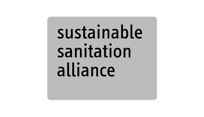Solid biomass fuels, such as carbonised or non-carbonised briquettes or pellets, are produced from recovered organic waste. They can be used for cooking, heating or other energy applications. The use of these energy-efficient technologies ensures minimal fuel consumption and can reduce ambient air pollution.

Biomass with a high cellulose content can be used to produce solid biomass fuels such as briquettes or pellets T.5. While these fuels can be used for heating and other energy applications, they are often used for cooking. Cooking represents an essential and often underserved energy need in humanitarian settings. In cold climates, cooking and heating are often combined. Biomass fuels produced from organic waste can replace traditional biomass fuels such as wood and reduce the time, effort and exposure to risk from biomass gathering. Replacing traditional biomass fuels can help reduce deforestation, environmental degradation, the risk of gender-based violence and other public health concerns. However, an efficient use of biomass fuels is essential. This can be achieved, for instance, through improved or forced-draft cooking stoves or energy-retaining heating systems. According to the World Health Organization, solid biomass fuels are not a clean energy solution. Therefore, potential ambient and indoor air pollution should be assessed and minimised by using adequate stoves, heating systems and chimneys.
Design Considerations
The use of biomass fuel should consider fuel-related characteristics and the need for sufficient or enhanced airflow to ensure complete combustion and heat retention. Briquette and pellet stoves and heating systems differ from wood-based solutions due to the fuel size and an increased need for ventilation. Technology selection preferably considers the Multi-Tier Framework (MTF) developed by the World Bank which measures access to energy using multiple criteria (such as efficiency and ventilation) and applies to space heating and cooking solutions. Selecting low-tier solutions will increase fuel consumption and air pollution while reducing affordability, safety and convenience at the same time. Whenever possible, the use of locally produced technologies is preferred. If these do not meet the desired tier-level, access to adequate cooking or heating solutions might have to be provided through in-kind donations or the creation of a market supply.
Materials
Various materials are used to make cooking stoves and heating systems. Cooking stoves may be produced from virgin or recycled metals, repurposed metal items (such as cans or car wheel rims), clay or a combination of all three. Heating systems and chimneys can be built from concrete, brick and mortar, metal or heat-retaining stones or firebricks. Where possible, biomass fuel cooking stoves and heating systems should be constructed with locally available materials using local manufacturing capabilities to reduce costs and encourage local economic development. The materials should be durable and heat-resistant to prevent breakdowns or failure during use.
Applicability
The production of biomass fuel T.5 and its use is likely to be limited to stable contexts in protracted or development settings. Energy-efficient cooking or heating solutions that use solid biomass fuels may not be locally available or widely used.
Operation and Maintenance
Solid biomass fuels must be stored in a safe and dry place to prevent the outbreak of fire and the absorption of moisture, which can lead to reduced heating values and increased smoke emissions. Plastic waste should not be used as kindling or fuel in stoves or heating systems. Proper training on the use and maintenance of improved biomass fuel systems ensures efficient and safe use; it should include management of the ashes. Chimneys might need regular cleaning of ashes and deposits to allow sufficient airflow and prevent chimney fires.
Health and Safety
According to the World Health Organization, solid biomass fuels are not clean cooking or heating solutions. Selecting the highest MTF tier solution for a given context helps to reduce ambient and indoor air pollution and increases affordability, safety and convenience of use. Ventilation and proper smoke extraction are crucial to ensure complete combustion and the removal of noxious fumes and gases, including carbon monoxide.
Costs
The cost of biomass-based solutions for cooking, heating or other energy appliances depends on the type of technology and the number of implemented units. In humanitarian settings, these solutions are commonly provided as in-kind donations or through subsidies, which allow market-based approaches. Both cases can be expensive for householders. Innovative approaches, such as carbon finance, pay-as-you-go or the leasing of mobile cooking equipment, can reduce upfront costs. Operational costs are mostly from the procurement of relevant fuels. Households often cover these costs themselves with their own funds or with the support of subsidies or cash and voucher assistance.
Social Considerations
Although the use of biomass fuels for cooking, heating or other energy applications is widespread, communities may still reject the introduction of new fuels and new combustion technologies. This can be because traditional food preparation methods are deeply ingrained or the use of recovered biomass from waste is socially and culturally unacceptable. Access to waste-derived biomass fuels provides an alternative to sourcing other solid biomass fuels such as wood. It can reduce the time and effort needed for biomass gathering which is commonly a burden for women and girls. The freed-up time can be redirected to education or income-generating activities. Improving access to fuel can also have a significant positive impact on protection outcomes. When introducing new cooking or heating solutions, existing private sector actors should be integrated with the implementation to prevent competition and market distortions X.5.
Key Decision Criteria
Input Products
Solid Biomass Fuel
Response Phase
Application Level
Management Level
Space Required
low
Technical Complexity
low
Objectives & Key Features
Fuel for cooking and heating
Strength & Weakness
- Can replace traditional biomass fuels and reduce deforestation
- Can have a positive effect on protection outcomes
- Solid fuels from recovered biomass are renewable and carbon neutral
- Solid biomass fuels are not considered a clean energy source
- The availability of biomass fuel may be limited
Selected References
Technical guidance on clean cooking and biomass stoves
Clean Cooking Alliance (2024): The Clean Cooking Catalogue






